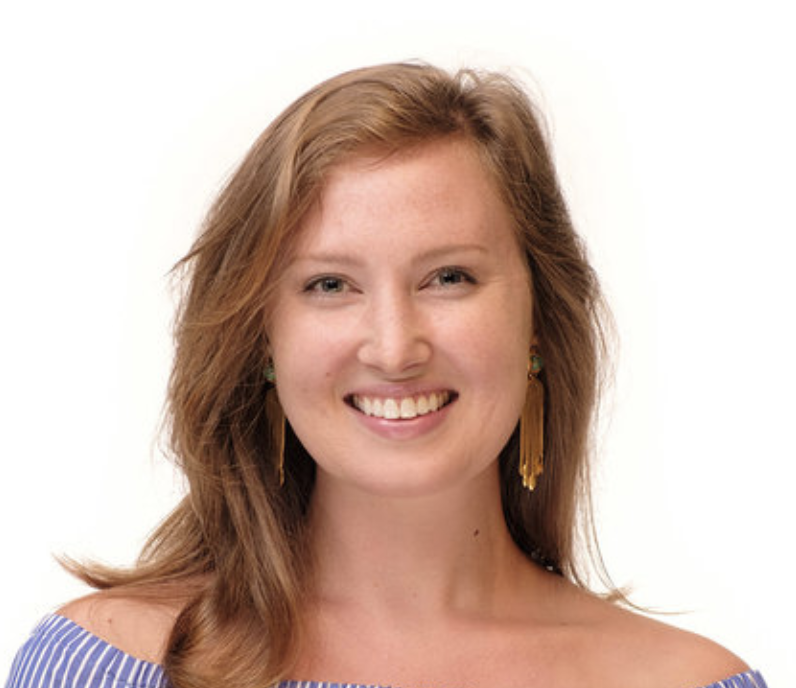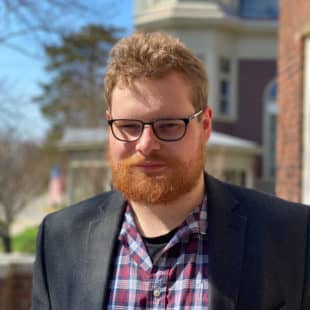Alternative Colleges: 10 Uncommon Schools For Exceptional Students
For all its vastness and diversity, higher education in the U.S. can appear somewhat homogeneous.
The U.S. is home to almost 4,000 degree-granting colleges and universities, including those small and large, urban and rural, two-year and four-year, and online and residential. Yet the educational experience from one college to the next can seem quite similar. Most students take the same kinds of courses for the same amount of time in the same fashion and amass the same number of credits to earn a degree.
There’s certainly nothing wrong with uniformity, but some students seek a different kind of experience, something you can’t get just anywhere. Call them iconoclasts, nonconformists, or merely intellectually curious. For these students, a cookie-cutter education simply won’t do.
Luckily, these students have options. Several U.S. colleges offer a unique brand of education, or at least something beyond the ordinary.
If you count yourself among this crowd, below are 10 alternative colleges you should definitely consider.
1. Evergreen State College: Design Your Own Major
Not interested in the standard fare of history, English, psychology, or business administration? Evergreen State College in Washington state might be right up your alley.
With campuses in Olympia and Tacoma, Evergreen State allows students to chart their own educational paths and pursue interdisciplinary fields of study. Students can also pursue a thematic education, such as in food and agriculture and visual and media arts.
And don’t worry about deciding right away. Instead of asking students to choose a major early on in their studies, Evergreen wants students to declare their field toward the end — after they’ve completed most of their educational journey.
Bonus fact: Evergreen’s mascot is the geoduck. Pronounced “gooey duck,” it’s not some adventurous mallard on the hunt for hidden treasure but rather the world’s largest burrowing clam, which can live upwards of 160 years. Let’s see your run-of-the-mill tiger or eagle do that.
2. St. John’s College: The Great Books
On the opposite end of the curricular freedom spectrum lies St. John’s College.
Johnnies love to read books and discuss them. We’re not talking about Stephen King’s latest potboiler, either. These authors include Aristotle, Homer, Plato, and Sophocles, among others.
All students — on two campuses in Annapolis, Maryland, and Santa Fe, New Mexico — follow the same educational path, studying philosophy, literature, political science, psychology, history, religion, economics, and math in a sequential progression, all delivered through the “great books.”
St. John’s doesn’t have majors per se. Professors are called “tutors,” electives are “preceptorials,” and meetings with faculty are “don rags.” It’s certainly different.
If a great football team tops your list of must-haves, look elsewhere. But if you like to read, talk, and perhaps want to be a lawyer someday, St. John’s has your ticket.
3. Colorado College: Block Plan
Let’s say you’re the type who prefers to eat your meal one food item at a time. If you’re nodding yes, you might find a happy home at Colorado College.
Through the college’s “Block Plan,” students take one course for three and a half weeks, then move on to another one. Do this four times, and that’s your semester.
What’s more, classes are held in the morning, allowing students free afternoons to explore the beauty of the Centennial State.
Colorado College might be the perfect place for students who are laser-focused and wish to concentrate on the matter at hand without distractions.
If that’s you, also consider Cornell College. No, not Andy Bernard’s Cornell. The one in Iowa. It offers a similar structure, straightforwardly named “One Course at a Time.”
4. Deep Springs College: Small, Free, and Self-Governed
Another school with no majors is Deep Springs College. In fact, you’ll discover that Deep Springs has very little in common with the rest of higher education.
Located on a cattle farm in rural California, Deep Springs is a private, two-year college enrolling about 12-15 new students per year. Most kindergartens are larger.
Every student receives a full scholarship covering tuition and room & board.
What’s the catch? Well, all students perform 20 hours of manual labor per week as one of the “pillars” of a Deep Springs education. It’s designed to instill a sense of ownership and responsibility.
Another pillar is self-governance, meaning students essentially run the college, as frightening as that must seem to the faculty and administration.
Students take two or three classes per term in the humanities, social sciences, natural sciences, and the arts before transferring to a wide range of universities nationwide.
Looking for the anti-Ohio State? Here you go.
Bonus: For another small (not that small) and tuition-free option, check out Berea College in Kentucky.
5. Minerva University: Global Immersion
Quick — What’s the most selective college in the country? Harvard? Nope.
It’s probably Minerva University, which accepts 1-2% of applicants each year.Based in San Francisco, Minerva takes its students on an immersive educational journey, with stops in London, Berlin, Seoul, and Buenos Aires, among other locations — even though classes are held online.
A young institution founded in 2012, Minerva offers students a project-based curriculum and small seminars. Minerva is considered one of the most innovative universities in the world.
Are you an early adopter and seeker of vanguards? Minerva may be your answer, assuming you can get in. If not, there’s always Harvard.
6. University of Austin: Fearless Pursuit of Truth
Austin, Texas, already has a famous university, the one known for football, burnt orange, and “hook ‘em horns” salutes.
But there’s another school in the city, a brand-new institution that admitted its first class in 2024. It’s the University of Austin, where students “fearlessly pursue truth.”
A residential campus, Austin features a curriculum predicated on “intellectual foundations” and the exploration of cosmic questions about government, economics, ethics, technology, and art. Interdisciplinary institutes and “startup incubators” also highlight the university’s unique approach to learning. It offers one degree: a bachelor of arts in liberal studies.
Austin warns prospective students that its academic program “isn’t for the faint of heart.” Then again, neither is playing linebacker in the Southeastern Conference.
7. Reed College: Fiercely Intellectual
Like Johnnies, Reedies are fiercely intellectual. Steve Jobs attended Reed College but dropped out after one semester to dabble in some tech startup.
Known for its intense academic environment, Reed operates on a pass/fail grading system and instead provides students with detailed feedback on their academic work.
All students at this Portland, Oregon, campus take Humanities 110, an exploration of the fundamental questions of human existence. Consider it a brainiac boot camp.
Don’t let the college’s relatively low ranking fool you, either. It’s widely considered among the nation’s best liberal arts colleges, but it doesn’t participate in rankings surveys, which accounts for its artificially low spot.
Bonus fact: Reedies get to tinker with a real nuclear reactor on campus and often receive glowing recommendations for graduate school after their experience.
8. Olin College of Engineering: Interdisciplinary STEM Education
“Hey, let’s create a new engineering college.””Great. We need more of those. Where will we put it?””How about right outside of Boston?””Isn’t there already a pretty famous engineering school nearby?””Yeah, but this one will be free.”Olin College of Engineering isn’t exactly free, but it aspires to be. The college says it “will always endeavor to operate by offering full-tuition scholarships to all regular full-time students.”So it’s not exactly free for everyone, but it’s still a pretty good deal, especially given the outstanding education offered at this Needham, Massachusetts, school founded in 1997.
A small college with only about 400 students, Olin offers a hands-on, project-based learning environment and, despite its youth, is considered among the nation’s top undergraduate engineering schools. It’s so committed to interdisciplinary approaches that it doesn’t even have academic departments.
Fun fact: These science nerds created their very own retractable lightsaber, no doubt to show off at the next Comic-Con.
9. College of the Atlantic: Environmentally Conscious
Another school with no departments, the College of the Atlantic offers one major: human ecology.
Home to about 350 students, this Bar Harbor (pronounced locally as “Bah Habbah”), Maine, college sits right on the Atlantic seacoast, as the name might suggest. All learners complete an internship and a capstone project, and most study abroad at some point during their education.
The college is extremely environmentally conscious and is routinely ranked as the top “green” college in the U.S.
COA says their school “doesn’t feel like the typical college.” Maybe that’s because the main campus landmark is a giant finback whale skull.
10. West Point: Duty, Honor, Country
The U.S. is home to dozens of military academies, but arguably the most famous is West Point in upstate New York. Known officially as the United States Military Academy, West Point has been educating and training military leaders since 1802.
Ever heard of Ulysses S. Grant, Douglas MacArthur, George Patton, and Dwight Eisenhower? They were all Cadets.
Students attend West Point tuition-free and even earn a monthly salary while in school. Of course, getting in requires a congressional nomination, not to mention outstanding grades and physical fitness. Graduates leave as second lieutenants in the Army.
Similar options include the U.S. Naval Academy (“Annapolis,” in Maryland), the Air Force Academy (Colorado), and the Coast Guard Academy (Connecticut).
Perhaps chief among the inherent benefits of attending West Point is the annual Army-Navy game, one of the most storied rivalries in college football, complete with mules, parachute drops, bonfires, and a “prisoner exchange” where Cadets and Middies sit on opposing sides at their own risk.
Frequently Asked Questions About Alternative Colleges
Attending an alternative college can not only provide you with a unique education but can also set you apart in the job market. A degree from a “nontraditional” school says you’re an independent thinker willing to take risks and find creative solutions.
Explore More College Resources

Summer Semester: When Does It Start? And Should You Enroll?
School’s out — or, rather, in — for summer. Discover the pros and cons of enrolling in an optional summer semester in college.

by Anne Dennon
Updated March 20, 2023

